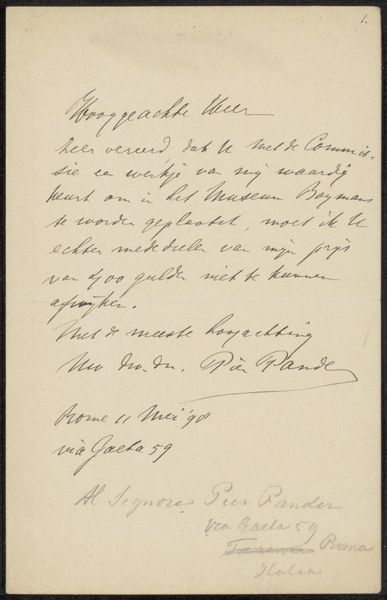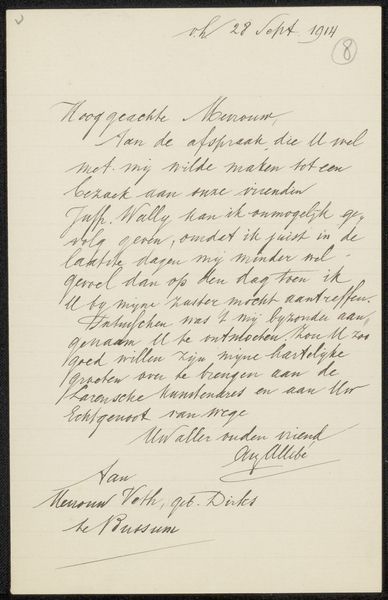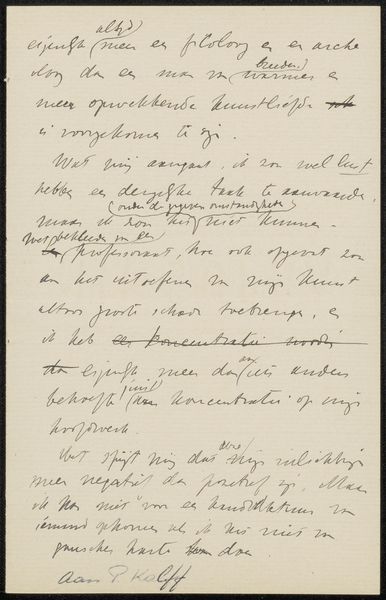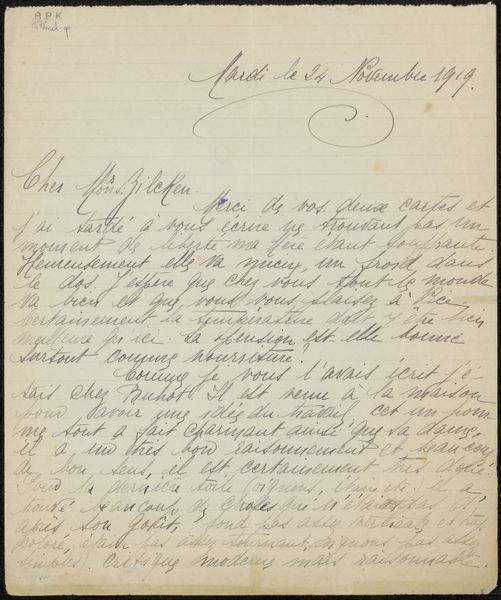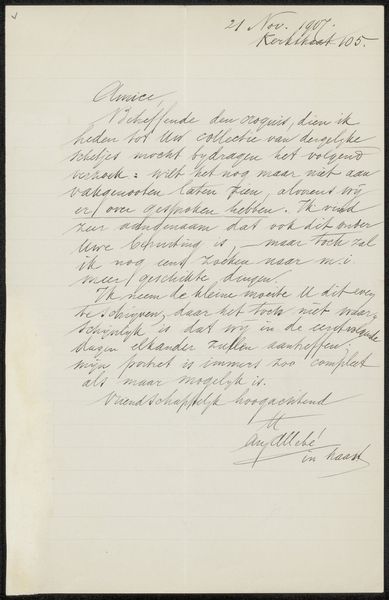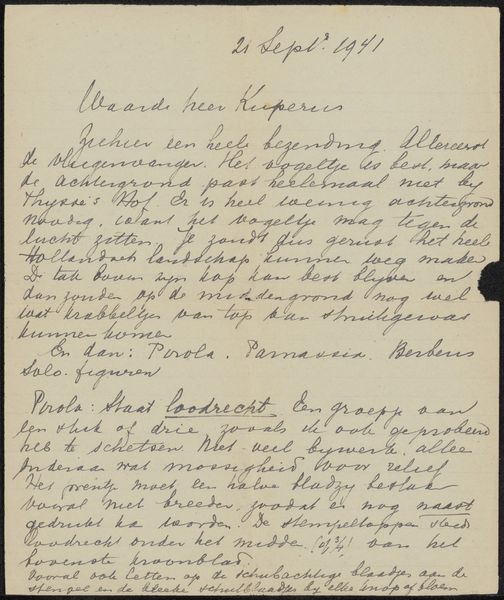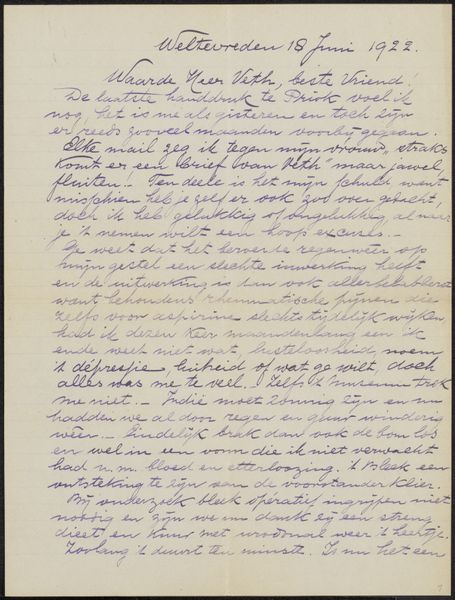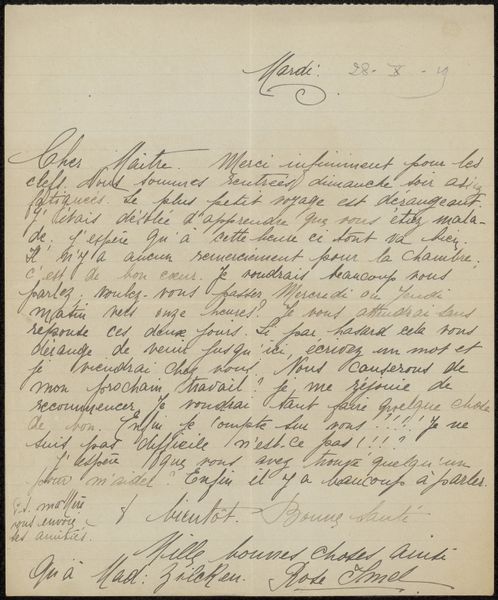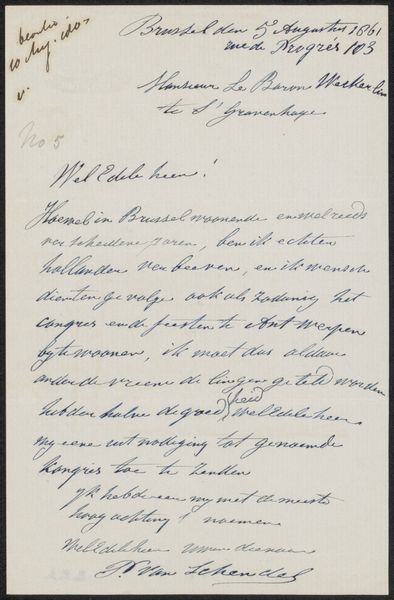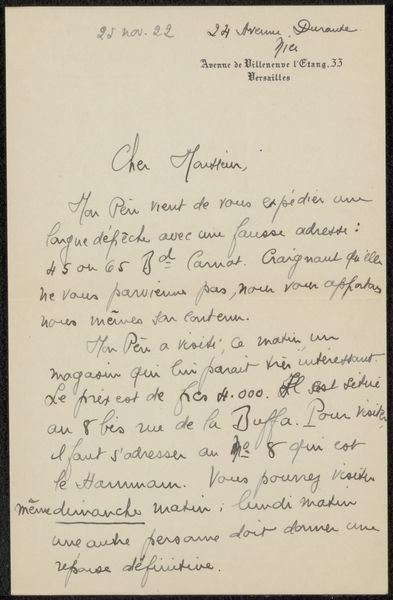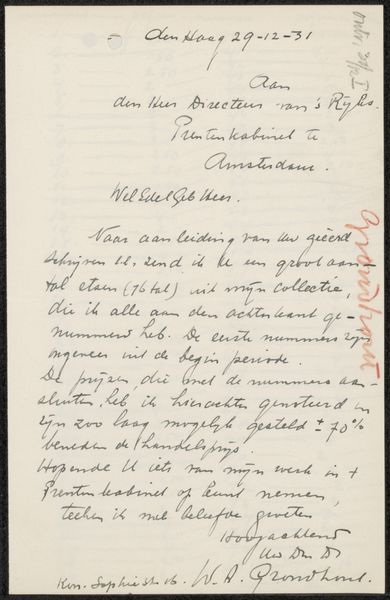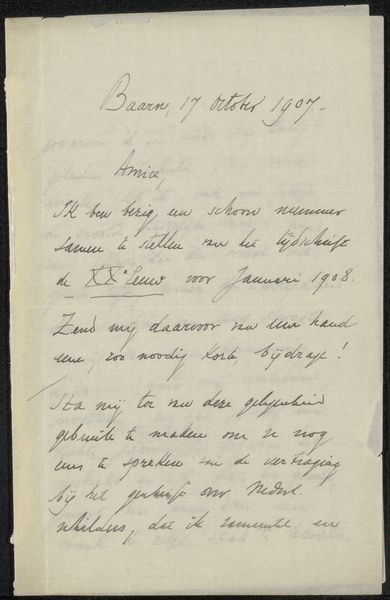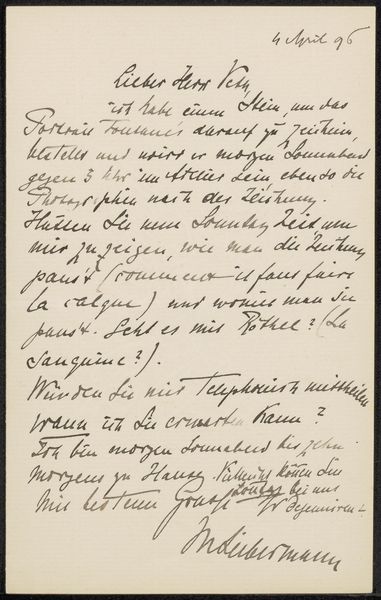
drawing, paper, ink, pen
#
portrait
#
drawing
#
aged paper
#
hand written
#
script typography
#
hand-lettering
#
hand drawn type
#
hand lettering
#
paper
#
ink
#
hand-written
#
hand-drawn typeface
#
pen work
#
pen
#
handwritten font
#
calligraphy
Copyright: Rijks Museum: Open Domain
Curator: I’m struck by the elegant simplicity of this piece titled "Brief aan Henriette Wilhelmina van Baak en Philip Zilcken," possibly dating between 1921 and 1929. It's a drawing on paper using ink, so its physical presence is rather humble. Editor: Initially, I’m captivated by the delicate script—the almost uniform line weight speaks to me, the evenness of the application revealing considered intent and masterful execution. It radiates a gentle refinement, and melancholy of past correspondence. Curator: That script is revealing, isn't it? Consider the gesture of a handwritten letter—especially this one, likely a note of thanks for some flowers— it is quite symbolic. The act carries an intimacy now largely displaced by digital forms of communication. The dried flowers even seem to become almost saint-like relics from their donor. Editor: Indeed, and I am particularly drawn to the formal relationships between the letterforms themselves. Note the way certain letters loop and intertwine, the ascenders and descenders creating visual rhythm and unity on the aged paper. The use of a simple palette enhances its classical purity. It seems so perfectly balanced. Curator: Beyond aesthetics, there is something very telling embedded within the text of handwritten thank you notes like this one; consider how flowers represent so many things—sympathy, admiration, beauty, love—the list is extensive. In a world undergoing immense upheaval between world wars, they stand as an interesting visual of that turbulent time and also a desire for simple beauty, which often carries social implications. Editor: And, from a structural perspective, even the stain of time, seen in the aged and worn quality of the paper, plays a crucial role in conveying meaning. These tonal variations enrich our viewing experience, accentuating visual subtleties—such as a certain density of lines and a lightness overall, working together to build harmony. Curator: Examining an everyday token with this level of care unveils the lasting impact even the most common forms of communication have. It reflects how traditions and even individual objects like the dried blooms referenced can weave powerful tapestries across generations. Editor: Absolutely, it also affirms that an intricate examination of visual structure and arrangement can, indeed, elevate what appears to be straightforward—encouraging new interpretive readings to light our path and ultimately enriching perception itself.
Comments
No comments
Be the first to comment and join the conversation on the ultimate creative platform.
